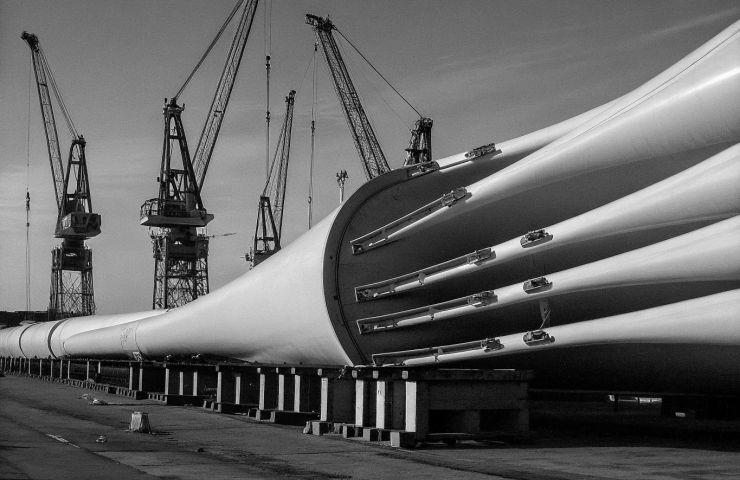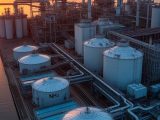
EU Needs €6.4bn Investment in Ports and Vessels to Boost Offshore Hydrogen Production
August 8, 2025In July 2025, WindEurope and the European Commission sounded the alarm: Europe’s on track for a major bottleneck unless we channel an extra €6.4 billion into upgrading ports and rolling out zero-emission vessels. It isn’t just about cranking up Offshore Wind Turbines (15MW+)—we need to turbocharge green hydrogen and clean ammonia production through offshore electrolysis, too.
Key Insights
- The EU is aiming for 84 GW of offshore wind by 2030 and 300 GW by 2050 to hit climate neutrality.
- On top of the recent €6.7 billion, another €6.4 billion is critical to dodge supply chain holds.
- Electric, hydrogen- and ammonia-powered vessels will be the workhorses servicing wind farms and production platforms.
- The North Sea, Baltic Sea and Atlantic coasts are crying out for port capacity boosts.
- Streamlined permitting and an EU-wide port map would slash timelines and costs.
Investment and Infrastructure Gap
Europe’s offshore wind parks are booming, but ports and vessels haven’t kept pace. According to WindEurope’s latest figures, countries bordering the North Sea, Baltic Sea and Atlantic need roughly €13.1 billion by 2030 to deck out their ports and fleets. So far, public and private stakeholders have earmarked about €6.7 billion, leaving a gaping €6.4 billion hole that could derail the EU’s targets.
This shortfall ripples across the entire supply chain. Ports must widen berths, reinforce quaysides for massive components and build on-site facilities for electrolysis units and hydrogen storage. Meanwhile, installation, service and crew-transfer vessels have to go zero-emission—from battery-electric jack-ups to ammonia-fuelled ships—to match decarbonization goals.
The EU’s Offshore Renewable Strategy from 2020 laid out an ambitious roadmap, but early projects have already hit logistical snags. Without more investment, developers risk delays in cable laying, turbine installation and commissioning of offshore electrolyser platforms. Even a six-month slip on a major 1 GW project can rack up tens of millions in extra costs and push back hydrogen production timelines.
Technical Dive
Pushing for larger Offshore Wind Turbines (15MW+) brings its own set of challenges: you need heavy-lift cranes and specialized vessels. Ports have to deepen quays to around 40 metres, beef up aprons to handle rotor blades stretching over 100 metres, and allocate yards for electrolysers, compression units and cryogenic tanks for hydrogen and ammonia. In effect, these ports become full-fledged energy hubs.
Out at sea, zero-emission vessels aren’t optional—they’re essential. Hybrid ships powered by green hydrogen fuel cells or ammonia engines are on trial, but high upfront costs and scarce bunkering infrastructure are hurdles. Retrofitting a Service Operation Vessel with fuel cells, for example, can tack on an extra €10–15 million to capex. That’s where public grants and EU co-funding—like InvestEU and the Connecting Europe Facility—come in.
Strategic and Business Angle
From a commercial standpoint, ports that leap into decarbonization first will snag escalating volumes of offshore work. They can offer turnkey solutions—berthing, storage for components, vessel refueling—for both wind farm developers and green hydrogen producers. That all-in-one approach smooths logistics, slashes vessel idle time and boosts project IRRs.
This is a true public-private play. The European Commission has already pledged €1.25 billion in infrastructure grants, but national authorities must align their Ports Strategies with industrial targets. Countries slow to enforce hydrogen use targets risk losing ground to more proactive neighbours. Cross-border collaboration—especially on hybrid offshore projects and grid interconnectors—cuts redundant cable routes and optimizes energy flows.
Perspective and Analysis
Hitting the EU’s 2050 climate-neutrality goal hinges on timely port and vessel upgrades. If that €6.4 billion gap isn’t closed, we’ll see a domino effect: commissioning delays, soaring vessel charter rates and a slower ramp-up of sustainable energy production. That scenario would keep power prices high and jeopardize Europe’s industrial decarbonization roadmap.
On the bright side, faster investment means a surge of coastal jobs and cements Europe’s lead in hydrogen infrastructure and ammonia production—giving EU manufacturers and service providers a head start in global markets. Careful environmental planning—like using existing quays instead of greenfield sites—can ease pressure on marine ecosystems while delivering economic gains.
Closing Insight
The clock is ticking on Europe’s offshore ambitions. Filling that €6.4 billion ports and vessels gap is crucial to safeguard 2030 targets, turbocharge green hydrogen output and strengthen energy security in a post-Ukraine war world. It’s a tall order, but with aligned policy, strategic funding and cross-border teamwork, the payoff is cleaner skies, stronger economies and a more resilient energy future.



 With over 15 years of reporting hydrogen news, we are your premier source for the latest updates and insights in hydrogen and renewable energy.
With over 15 years of reporting hydrogen news, we are your premier source for the latest updates and insights in hydrogen and renewable energy.